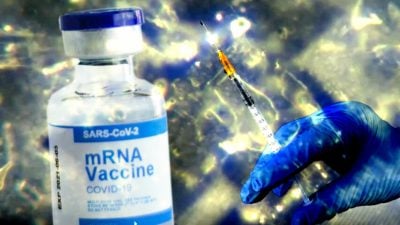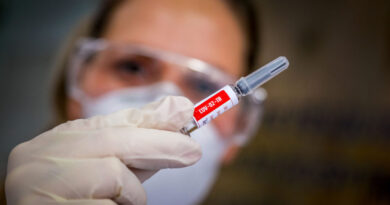“Observable Real-time Injuries at the Cellular Level in Recipients of the “Safe and Effective” COVID-19 injectables”

We bring to the attention of our readers this important study
Abstract
Observable real-time injuries at the cellular level in recipients of the “safe and effective” COVID-19 injectables are documented here for the first time with the presentation of a comprehensive description and analysis of observed phenomena.
The global administration of these often-mandated products from late 2020 triggered a plethora of independent research studies of the modified RNA injectable gene therapies, most notably those manufactured by Pfizer and Moderna.
Analyses reported here consist of precise laboratory “bench science” aiming to understand why serious debilitating, prolonged injuries (and many deaths) occurred increasingly without any measurable protective effect from the aggressively, marketed products. The contents of COVID-19 injectables were examined under a stereomicroscope at up to 400X magnification. Carefully preserved specimens were cultured in a range of distinct media to observe immediate and long-term cause-and-effect relationships between the injectables and living cells under carefully controlled conditions.
From such research, reasonable inferences can be drawn about observed injuries worldwide that have occurred since the injectables were pressed upon billions of individuals. In addition to cellular toxicity, our findings reveal numerous — on the order of 3~4 x 106 per milliliter of the injectable — visible artificial self-assembling entities ranging from about 1 to 100 µm, or greater, of many different shapes. There were animated worm-like entities, discs, chains, spirals, tubes, right-angle structures containing other artificial entities within them, and so forth. All these are exceedingly beyond any expected and acceptable levels of contamination of the COVID-19 injectables, and incubation studies revealed the progressive self-assembly of many artifactual structures.
As time progressed during incubation, simple one- and two-dimensional structures over two or three weeks became more complex in shape and size developing into stereoscopically visible entities in three-dimensions. They resembled carbon nanotube filaments, ribbons, and tapes, some appearing as transparent, thin, flat membranes, and others as three-dimensional spirals, and beaded chains. Some of these seemed to appear and then disappear over time.
Our observations suggest the presence of some kind of nanotechnology in the COVID-19 injectables.
emphasis added
Click here to download the complete report.
*
Click the share button below to email/forward this article to your friends and colleagues. Follow us on Instagram and Twitter and subscribe to our Telegram Channel. Feel free to repost and share widely Global Research articles.
One Month Before Global Research’s Anniversary
Young Mi Lee, MD, is a practicing physician specializing in obstetrics and gynecology, and is also a reproductive endocrinologist; because of her work over the last three years she has become an expert in stereomicroscopy and in the microbiology of incubated COVID-19 injectables, especially, Pfizer and Moderna
Daniel Broudy holds a doctorate in applied psycholinguistics from the School of Communication and Creative Arts at Deakin University. He is a professor of applied linguistics at Okinawa Christian University. His research integrates research in cognitive linguistics, developmental and social psychology, semiotics, and communication theory as an effort to describe the ways in which centers of power organize campaigns of persuasion and engineer consent for policies and actions across cultures. His work appears with Palgrave, Macmillan, Westminster University Press, Opole University Press, the University Press of Wrocław, Peter Lang, Media Theory, Ethical Space: The International Journal of Ethics, Peace News, Truthout, The Asia-Pacific Journal: Japan Focus, Fast Capitalism, Propaganda in Focus, and System: An International Journal of Educational Technology and Applied Linguistics.
Featured image is from Mercola


